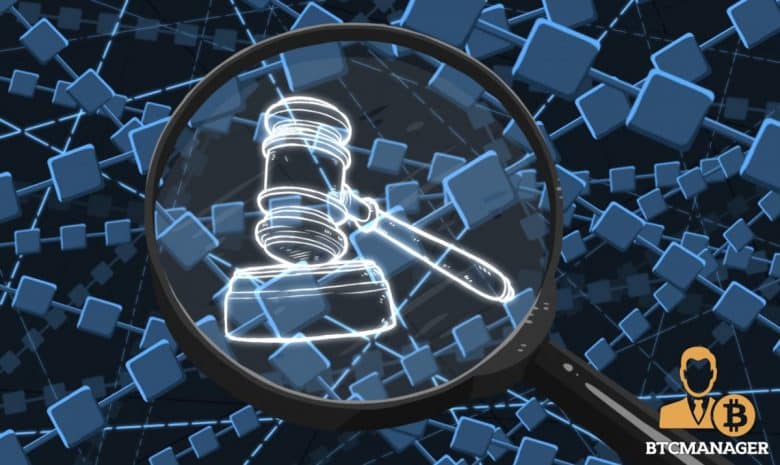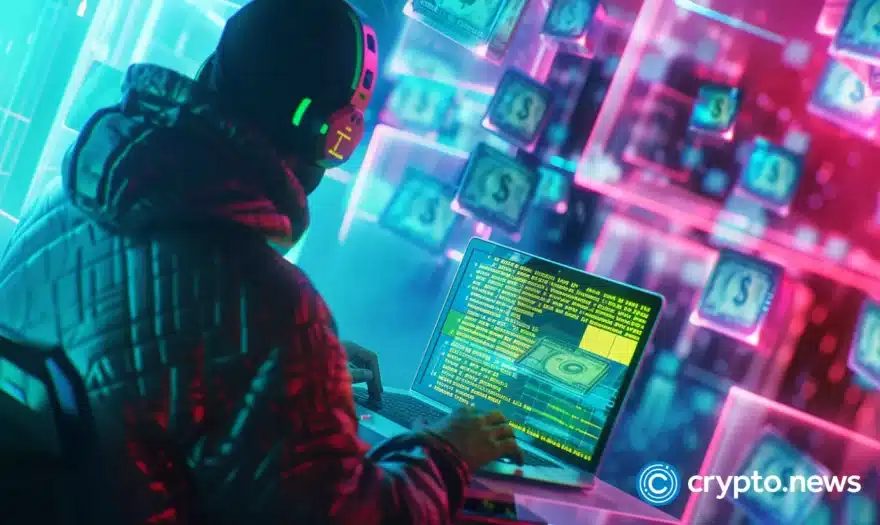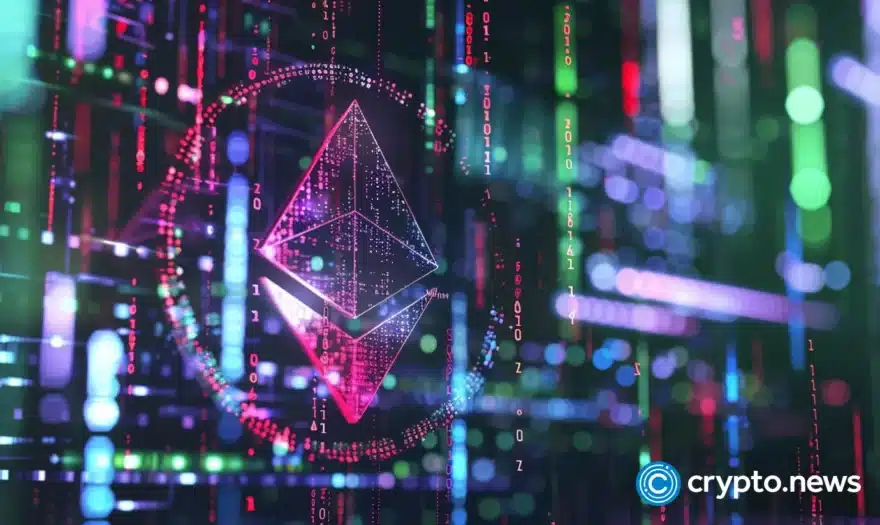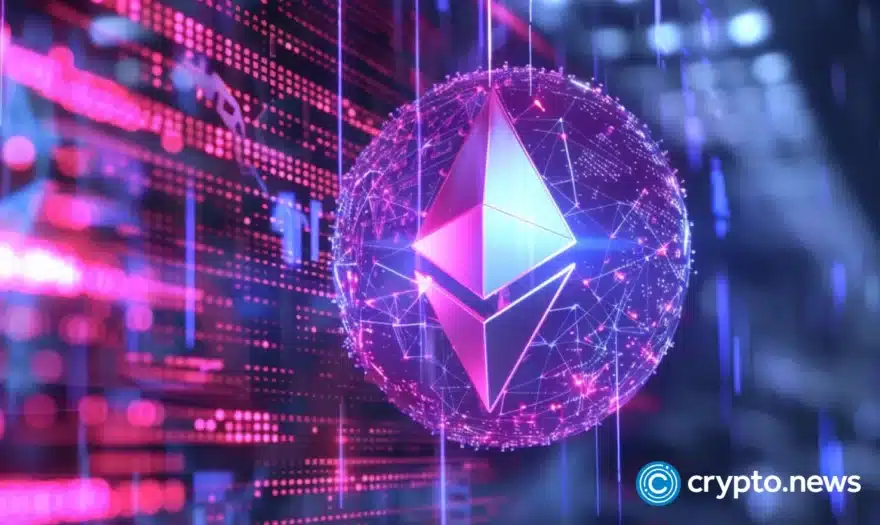Mattereum: Turning Code into Law

Blockchain startup Mattereum is developing an innovative way to unlock the potential that distributed ledger technology holds – in the context of digitizing assets – in a manner that is legally recognized by the law.
The London-headquartered startup is on the quest to provide legally enforceable smart contracts. Using the unique skills its team possesses, the company has developed a system that offers blockchain-based data legal recognition, all without the extensive changes to existing legislation.
The Problem with Smart Contracts
When smart contracts first came into existence as a result of Vitalik Buterin’s Ethereum, the innovation caused a serious stir in the crypto community. For starters, smart contracts allow parties to interact in a way that was previously thought to be difficult without arbitrators. While smart contracts reduce costs and increase efficiency, the development faces a significant challenge.
Smart contracts operate in a legal grey area. In most jurisdictions, smart contracts have yet to be explicitly awarded legal recognition. There is debate over whether smart contracts are inherently admissible in a court of law. However, as is the case with emerging technology, the law has yet to catch up, leaving those who would like to use the contracts, especially in the context of assets and their transfer, in an unenviable position.
In the initial days of the smart contract frenzy, the calling card was “code is law,” referencing the fact that smart contracts enforced the guidelines defined in their code and could not be changed or otherwise influenced once they were put into play.
Now, Mattereum is aiming to turn law into code, finally overcoming the most significant challenge that smart contracts have faced since their inception.
Mattereum Wants to Make Code Law
As explained in the project’s summary whitepaper, Mattereum “has created the legal, technical and commercial infrastructure layer for on-chain property transfer and control,” that enables assets to be moved in a way that the law recognizes.
The startup has previously been involved in a number of projects that uses blockchain technology to secure, protect, or streamline ownership and usage rights, such as the Imogen Heap-founded platform Mycelia. Mycelia is a blockchain-based streaming platform that aims to use DLT to better the revenue distribution model in the music streaming business.
Mattereum is interested in challenging the notions of ownership, primarily because blockchain technology can be utilized in ways that can underpin advanced ownership structures. The team explains:
“Restructuring the concept of physical asset ownership to include programmatic contracts may seem like a subtle change, but it’s one which could conceivably have massive structural repercussions and unlock enormous amounts of currently untapped potential.”
How it Works
As referenced earlier, Mattereum has been doing extensive work in the area of digitizing assets. Its chief scientist, Ian Grigg, is credited as the creator of the Ricardian contract. The Ricardian contract is a technique used to document data in a manner which ensures all the related information is admissible in a court of law:
“A Ricardian contract places the defining elements of a legal agreement in a format that can be expressed and executed in software. The key is to make the format both machine readable, such that they can easily be extracted for computational purposes, and readable as an ordinary text document such that lawyers and contracting parties may read the essentials of the contract conveniently.”
While Ricardian contracts help to efficiently format and organize data, they are still unable to help with dispute resolution.
Furthermore, in the event of a dispute, it is difficult to enforce any of the agreed-upon outcomes. This process is expensive, time-consuming as it likely takes years to resolve. Thus, Mattereum is reframing the problem in two ways.
“Firstly, an emphasis on dispute avoidance over dispute resolution, and secondly a razor-sharp focus on enforcement – removing the legal obstacles between an arbitrator making an award and the successful counterparty actually receiving compensation,” the white paper states.
To create a system which efficiently supports these dual guidelines, Mattereum came up with the concept of an automated custodian.
An automated custodian is a much-needed addendum to the concept of smart contracts. They make up a new class of legal entity, designed to be used in coordination with smart contracts. Mattereum defines the concept:
“An automated custodian becomes an asset’s legal owner and registrar, maintaining the authoritative register of interests in the asset.”
In smart contracts, as we know them, it can be difficult to quantify who owns an asset adequately, and this becomes even more complex in the case of more than one owner. However, in the Mattereum protocol, automated custodians help to unbundle legal ownership, as well as mutual financial interests. Automated custodians also help to make possession, and use of an asset less involved as the two ideas can be legally separated.
The automated custodian can also be a single entity or a group of people. If a group of people controls an asset, this is referred to a registrar. The ownership rights of an asset are transferred to the registrar, which as provided for in the Mattereum protocol, can define many aspects of the asset. These include, but are not limited to, who can use the asset, any revenue splits, or even highly specific details like the amount of insurance that the asset should have at any moment in time.
This approach is innovative because it looks at digitization from the standpoint of legal recognition of blockchain-backed ownership. It is already known that a blockchain can support programmable payments, as is the case in smart contracts. However, with assets that are physical, it can be difficult to record them on a blockchain adequately. Therefore, it is necessary to program the owners of the asset:
“So instead we program their owners – the registrars – which take legal title to the assets for (at least) the duration of the contract’s execution, and which are bound to honour the smart/Ricardian contracts which control the assets in accordance with the Mattereum Protocol.”
Using this approach, the startup can confer legally recognized ownership rights to the registrar. This simple rework negates the need for new legislation to acknowledge blockchain-based ownership.
The Mattereum protocol also includes the concept of an asset passport. While automated custodians provide for the needs and rights of owners, the assets must be adequately represented in the system as well. Asset passports are defined as “unique contractual container (legal and smart contracts together) that records and manages the rights and obligations associated with a given asset.” When onboarding assets into the Mattereum protocol, owners will define these legal containers.
The complete list of asset passports in the Mattereum protocol is called the Smart Property Register (SPR). This is another critical part of the protocol. The SPR is the definitive list of all the assets on the system. In addition to the names of the assets, the SPR also includes all the data related to the assets. This includes all active smart contracts, any tokens, as well as the rules governing the assets’ maintenance and use. No contractual right or interest in a registered asset is valid unless shown on the SPR.
The Smart Property Register functions similarly to registries for assets in the real world. For instance, in real estate, it is impossible to lay claim to any property if one is not shown as the owner in the relevant registry. The SPR extends this concept to all asset classes without requiring any changes to the current legal framework in any jurisdiction. The white paper explains:
“Double-spending assets becomes just as impossible as selling the same house to multiple buyers at the same time. As the sole legal owner of the asset, with definitive records of all related contracts and encumbrances, the Smart Property Register is the single source of truth in the same way the blockchain is the definitive record of who owns which tokens.”
The SPR also introduces a newer model of ownership because, through the onboarding process required by the Mattereum protocol, owners can clearly outline the guidelines they want to be followed in respect to the asset. This enables assets to be traded, rented, or otherwise utilized in a profit-creating way while ensuring that any non-monetary, or other longer-term issues are considered.
Liberating the Value Locked in Illiquid Assets
The Mattereum protocol gives physical matter digital interfaces which exponentially increase its value. In the same way that innovative systems like Airbnb and Uber introduced new revenue streams for otherwise unused assets, Mattereum believes its protocol will help to unlock the idle value held in assets which were difficult to digitize, or are illiquid.
Assets with a proper digital interface and history can be more valuable than assets without them. However, most of today’s digitized models focus on the platform itself rather than the assets therein. Mattereum aims to introduce more types of marketplace offers in relation to an asset. Through its protocol, the startup provides for an easy and convenient way to make commercial offers for the use of an asset in a wide array of ways. These include rent, leasing, and even partial ownership through a tokenizing process.
The Mattereum protocol provides interfaces which result in no sleeping assets as everything is commercially utilized at all times. The benefit of collateralizing illiquid assets is important because it can fuel economic growth, especially in the context of developing economies.
The startup hopes to help small businesses collateralize their assets, such as cows and farming machines, thus providing them with the same financing opportunities that larger operations have. Because small and medium enterprises generally drive economies in developing countries, this is likely going to have a significant impact on global GDP.
The Flagship Stradivarius Violin Project
To demonstrate its platform, Mattereum is planning on acquiring a Stradivarius violin. The $9,000,000 instrument will be one of the first on-chain assets for the Mattereum protocol. The protocol works double duty by providing provenance for the high-value asset while also defining all the relevant details for the instrument. The Mattereum team explains:
“The governing committee for the instrument will have legal decision-making powers over the instrument, protecting and curating it on behalf of the token holders and posterity, in accordance with a written constitution. Unique records which validate the instrument will create an indestructible title deed and register of interests in the violin.”
The flagship project also demonstrates how governance works within the Matttereum protocol. Because the Stradivarius violin is a high-value asset, while simultaneously being a cultural treasure, the registrar can require that it be played for the public once a year, for instance. This demonstrates how the protocol is introducing greater levels of utility with regard to the digitization of physical assets. The Mattereum team believes its protocol can provide architectural support for the host of complicated issues that arise in connection with asset ownership:
“We can buy things, wholly or as a percentage, create licenses for use, or stake assets as collateral. We can build complex systems of utility tokens, curation markets or any other smart contract system on top of it. We can create entire programmable economies for controlling the real world.”
What is significant is that the Mattereum protocol is workable for any type of asset. The SPR can include national assets like forest and rivers, providing governance for resources in new and innovative ways.
While the Mattereum protocol does not address the concerns regarding how to deal with registrars who abuse their powers, it does provide a way for the existing legal systems to interface with blockchain-based asset ownership. It will be interesting to see how the flagship project progresses as it will either prove or disprove the viability of the Mattereum protocol.












